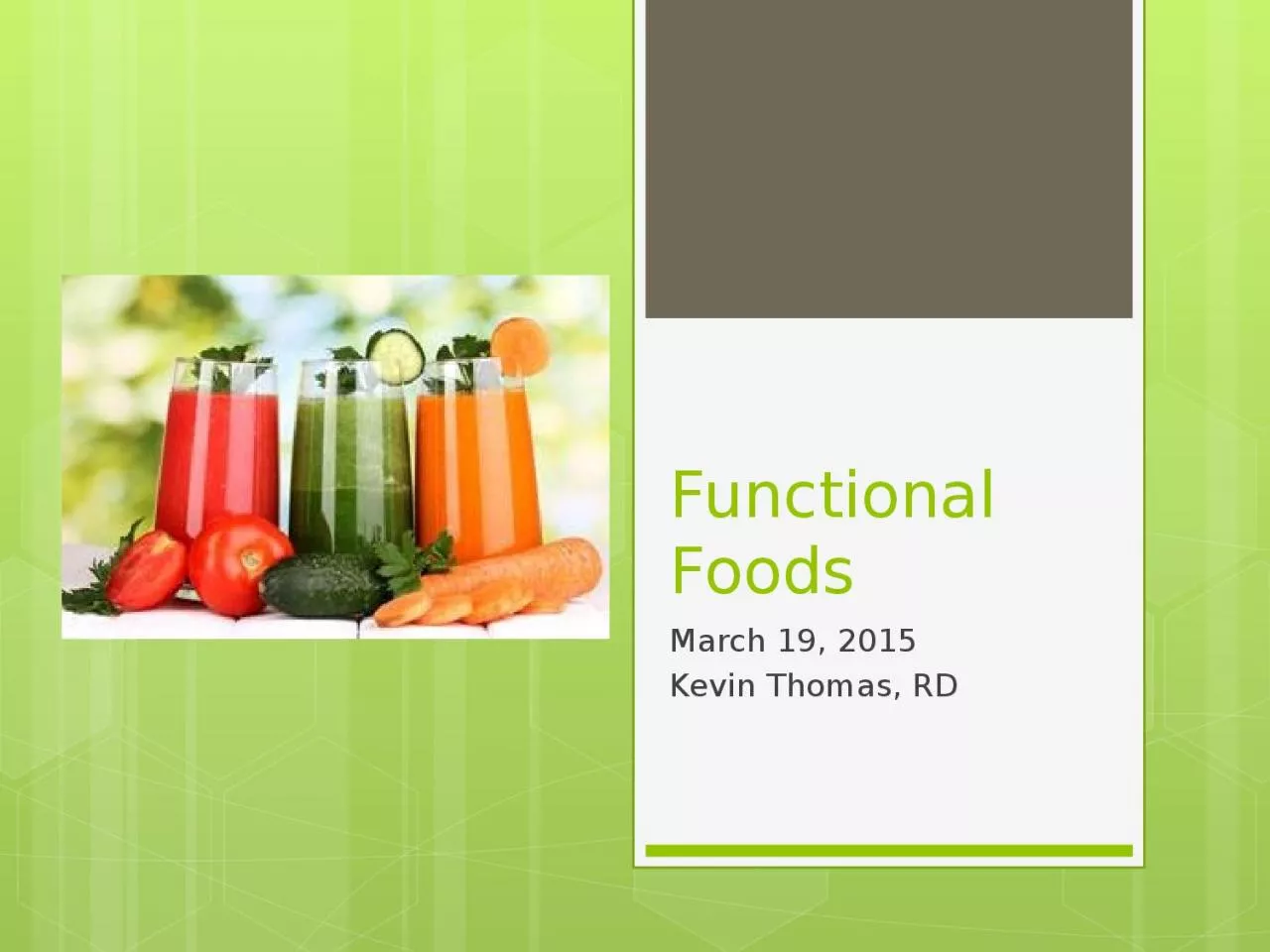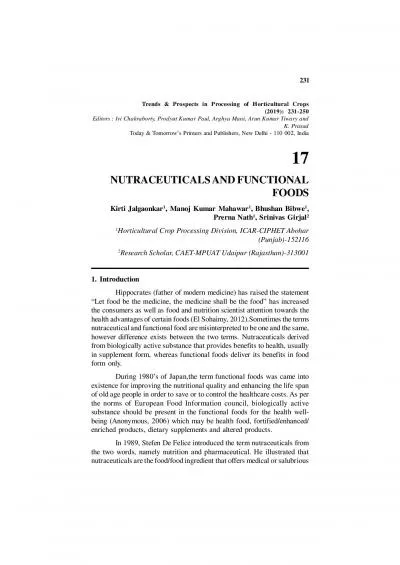PPT-Functional Foods March 19, 2015
Author : delcy | Published Date : 2023-07-27
Kevin Thomas RD Introduction National Nutrition Month so we are providing free education to those who want to learn Cover the basics of functional foods but really
Presentation Embed Code
Download Presentation
Download Presentation The PPT/PDF document "Functional Foods March 19, 2015" is the property of its rightful owner. Permission is granted to download and print the materials on this website for personal, non-commercial use only, and to display it on your personal computer provided you do not modify the materials and that you retain all copyright notices contained in the materials. By downloading content from our website, you accept the terms of this agreement.
Functional Foods March 19, 2015: Transcript
Download Rules Of Document
"Functional Foods March 19, 2015"The content belongs to its owner. You may download and print it for personal use, without modification, and keep all copyright notices. By downloading, you agree to these terms.
Related Documents














